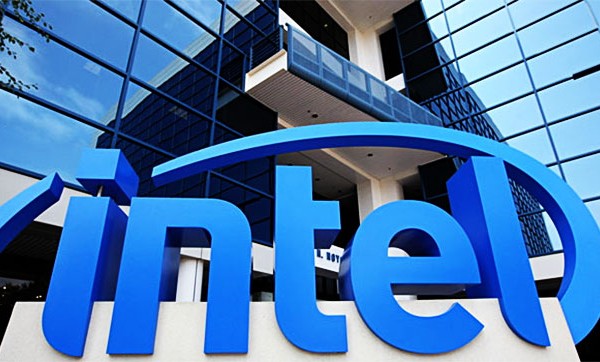 “In Everyday Life” By-line Series
“In Everyday Life” By-line Series
By Naveed Siraj, Country Manager Intel Pakistan
The New Industrial Revolution
Big Data and the Internet of Things (IoT)is revolutionizing the world around us – from the medical care we receive to the way retailers market to us – but how is the manufacturing industry benefitting from it?
Large manufacturers have been analyzing data to optimize production and processes for many years to drive performance. However, the sheer volume, variety and velocity of data being generated today – along with the new business intelligence tools available – has the potential to deliver even bigger financial and productivity gains in Asia Pacific and across the globe.
When combined with the opportunities generated by increasing trade between emerging markets in Asia-Pacific and Japan, it is an exciting time to be a manufacturer, and those in the region are expected to lead the global charge. According toIDC,manufacturers in Asia-Pacific and Japan will be among the first to develop new low-cost manufacturing centers using new technologies to drive connectivity and visibility across the entire value chain*.
This sentiment is echoed by manufacturers, with many already acknowledging the value improved data analysis can unlock within their organisations, especially in supply chain processes. For instance,research from the Manufacturing Enterprise Solutions Associationfound that 46 per cent of manufacturers believe big data analysis will allow them to better forecast products, while four in ten felt it would allow them to service and support customers faster. Additional benefits of enhanced data analysis recognized by manufacturers include receiving real-time alerts (38 per cent), correlating performance data to drive efficiencies (36 per cent), and improving interactions with outside suppliers (31 per cent).
However, while manufacturers realize the value of Big Data and the Internet of Things, only 10 per cent of manufacturers – according to Rockwell Automation – are using the connected enterprise to enhance operations.
Therefore, what IT changes should manufacturers look to make so they can realise the gains available, specifically when it comes to driving efficiencies on the factory floor?
*Source: IDC press release – Asia/Pacific Manufacturers Will Develop New Low-Cost Manufacturing Centers and Focus on Emerging Markets in 2014; New Technologies to Drive Visibility Across Supply Chain: IDC Manufacturing Insights, 9 Dec 2013
A Virtual Factory
Manufacturers need to implement technologies capable of bringing together multiple data sets from their various sensors and machines into a single stream, such asIntel® Industrial Solutions System Consolidation Series. Integrating and virtualizing intelligence across the factory – including real-time and archived data – will empower manufacturers to extract new insights through a 360 degree view of performance, enabling them to optimise and secure operations, and unleash transformative services.
Baosight, one of the largest system integrators in China, used the Intel Industrial Solutions System Consolidation Series to create a secure data collection and communication product that merged the tasks of two separate devices into one platform. By making this simple change, the company reported saving an estimated 60 percent of development time and 50 percent of development costs, a huge technical, financial, and competitive advantage.
Victory Through Harmony
Predictive analytic solutions should also be implemented by manufacturers – and integrated with existing systems – to enhance factory output and performance and longevity of existing assets. For instance,Intels predictive maintenance solutionuses data insights to identify degradation on hardware components so that parts can be replaced before breaking, helping to avoid unexpected downtime and the associated costs. Additionally, predictive analytics ensures machines are programmed to collectively work together. For instance, running one machine at full power could have a detrimental effect on a nearby machine, such as by creating too much heat. Yet, implementing predictive analytics solutions empowers manufacturers to set parameters that can be managed in real-time to ensure each cog on the factory floor works together in harmony.
A great example of the value of predictive analytic solutions in the manufacturing process is occurring right here at Intel. Every chip we produce undergoes a thorough quality check, which involves a complex series of tests. Our solution uses historical information gathered during the manufacturing process to reduce the number of tests required, therefore reducing the time needed to conduct them. In 2012 alone,this solution avoided USDmillionon the testing of one line of our Core processors, and extending this solution moving forward we expect to achieve financial savings of USD$30million.
Optimize Existing Assets
You might be thinking these new intelligent and integrated platforms will require a complete refresh of hardware on the factory floor and the IT systems being used. However, this isnt the case, and manufacturers can realise these gains by implementing one simple solution extending existing legacy systems and connecting them to next-generation intelligent infrastructures:Intelligent Gateways.
Providingpre-integrated, pre-validatedhardware and software building blocks, Intelligent Gateways connect legacy and new systems, and enable seamless and secure data flow between edge devices and the cloud. Delivering this simple ability ensures the gains from big data and IoT can be achieved without a complete rip and replace of existing systems, which would usually require significant investments while also impacting factory output.
Hand in Hand
Todays fiercely competitive manufacturing environment is driving companies to constantly sharpen their operational efficiencies and lower costs without compromising quality, employee safety, or performance. At Intel,were working hard to extend our relationships with manufacturersas they look to consolidate and take full advantage of the data at their fingertips, which is being created by the various connected sensors across the factory floor. The Internet of Things and big data go hand in hand, and with access to more information and the ability to rapidly analyze it, manufacturers will be able to develop new tools improving quality, increase throughput, and reduce machine failure and downtime, to achieve a leading competitive advantage.